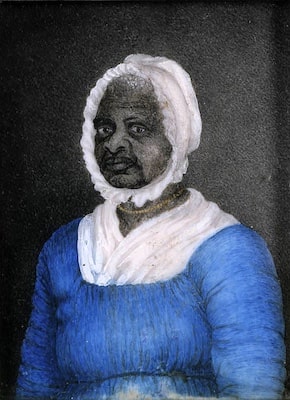In the years after the American Revolution, the northern United States became a center for anti-slavery activism. Although slavery still existed in some northern states, a growing number of individuals, religious groups, lawmakers, and community leaders began to challenge the institution. Their efforts took many forms—court cases, gradual emancipation laws, and the founding of abolitionist societies. Together, these actions laid the foundation for a movement that would grow in strength and influence into the 19th century.
A Nation Built on Liberty—and Still Divided
The ideals of the American Revolution introduced a new way of thinking about human rights. Ideas about liberty and equality, especially those found in the Declaration of Independence, led many Americans to question how a nation founded on freedom could allow slavery to continue. This tension was felt especially in northern states, where slavery was less central to the economy than in the South. Many people in the North began to see slavery as a contradiction to the values they had just fought a war to defend. These changing attitudes encouraged action—from both individuals and organized groups.
The Rise of Abolitionist Societies
One of the first major steps in the northern anti-slavery movement was the founding of abolitionist societies. These were groups formed to promote the end of slavery and, in some cases, to support the rights of free Black Americans. In 1775, the Pennsylvania Society for Promoting the Abolition of Slavery became the first organization of its kind in the colonies. It was made up of Quakers and other reformers who believed slavery was morally wrong.
After the Revolution, Benjamin Franklin, a founding father and former slaveholder, became president of the Pennsylvania Society. In 1790, he submitted a petition to Congress calling for an end to the slave trade and the gradual elimination of slavery in the United States. Although Congress did not act on the petition, it marked one of the first formal appeals to the federal government on the issue of slavery.

Other societies followed in states like New York, New Jersey, and Massachusetts. These groups held meetings, published essays and pamphlets, and pressured lawmakers to change state laws. They also worked to support Black communities by promoting education, employment, and legal rights.
Gradual Emancipation Laws
While few states moved to abolish slavery all at once, many adopted gradual emancipation laws. These laws were designed to phase out slavery over time rather than ending it immediately. The first was passed in Pennsylvania in 1780, followed by laws in Rhode Island and Connecticut. Other states, like New York and New Jersey, followed in the early 1800s. Typically, these laws declared that no new slaves could be born into slavery after a certain date. Children born to enslaved mothers would be freed after serving a period of indentured labor, often into their twenties. While gradual emancipation left many people in slavery for decades, it still marked a major shift in how states addressed the issue.
Individuals Who Challenged the System
In addition to lawmakers and societies, individuals played key roles in advancing the anti-slavery movement. Elizabeth Freeman, also known as Mum Bett, was an enslaved woman in Massachusetts who sued for her freedom in 1781. She argued that the new Massachusetts Constitution, which stated that "all men are born free and equal," meant that slavery was illegal. The court agreed, and her case helped lead to the end of slavery in Massachusetts.

Lemuel Haynes, a free Black man and Revolutionary War veteran, became one of the first Black ministers ordained in the United States. He used his position to speak out against slavery, writing sermons and essays that pointed to the moral and religious failures of the practice.
The Role of Quakers
Religious groups were also at the heart of anti-slavery activism. The Quakers, or the Religious Society of Friends, had long opposed slavery on moral and spiritual grounds. By the late 1700s, Quaker communities in Pennsylvania, New Jersey, and New England were actively working to end slavery and promote equal rights for African Americans. They were among the first to require their members to free enslaved people and were key supporters of abolitionist societies.
A Movement Takes Root
By the early 1800s, the northern anti-slavery movement had created a network of individuals and organizations pushing for change. While their efforts did not end slavery nationwide, they helped shift public opinion in the North and laid the groundwork for future activism. The movement’s strength came from its variety—laws, court cases, religious conviction, and personal courage all played a part. These early efforts would inspire a new generation of abolitionists in the decades to come.
